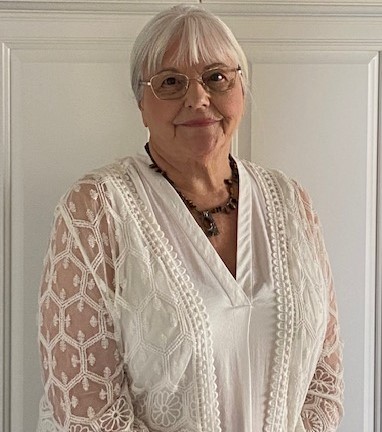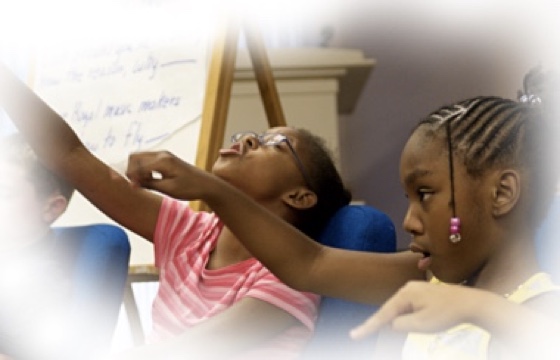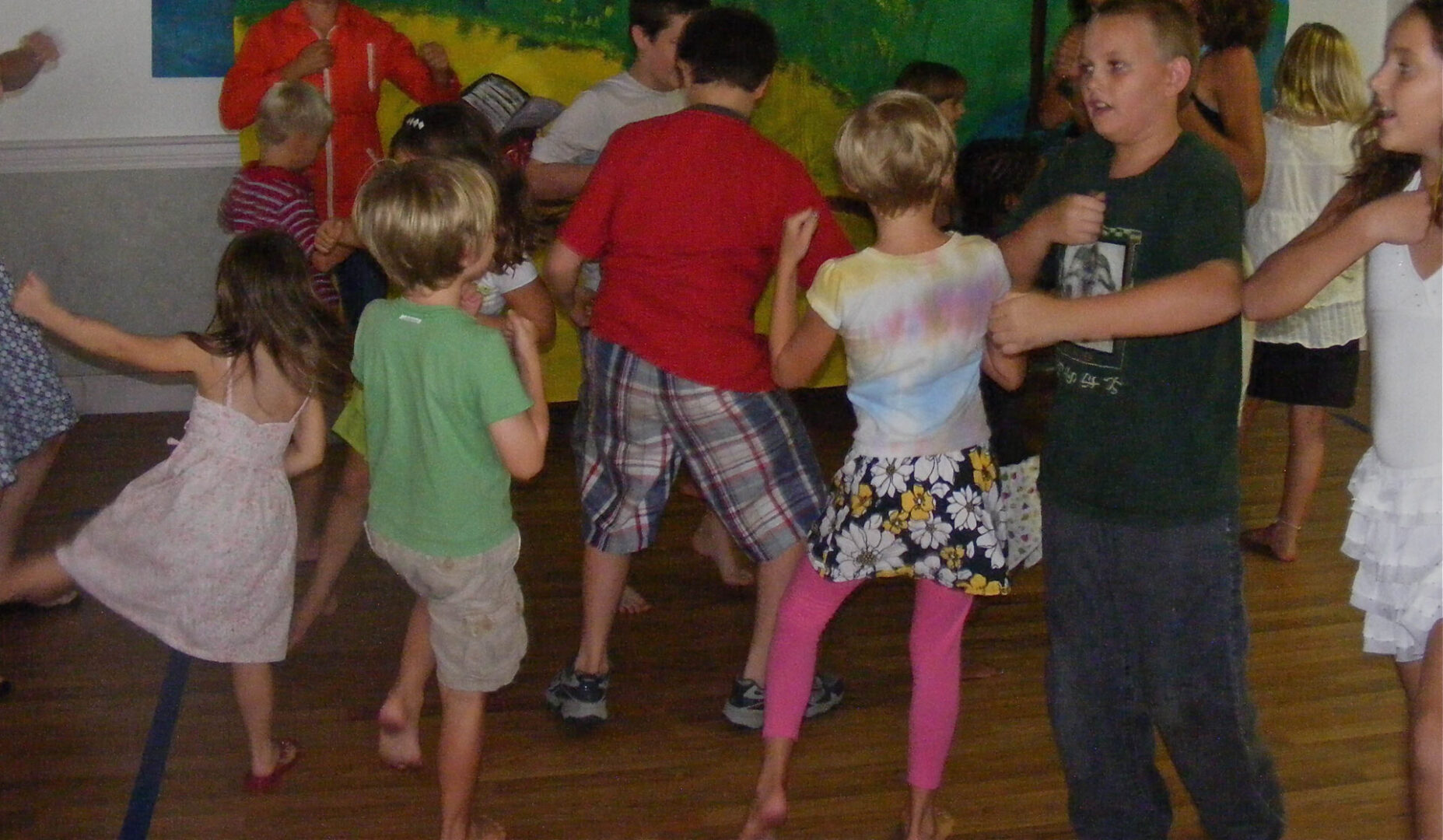ABOUT JAN MAGRAY
Jan Magray has combined her love for music, traditional musicianship training, and contemporary improvisational techniques into a unique method of learning musical skills while making music with others. Realizing the challenge facing most educational and after-school programs, she sought to design and test effective yet affordable ways to incorporate positive music expression to share musical success through singing and playing games in a safe and supportive context.
The outcome of this effort is the production of video songs prepared and presented by children for children. Jan holds a B.S. in Elementary Education from the University of Minnesota, an M.A. in Pastoral Ministry from Boston College, completed a graduate certificate in Music Education at The Kodaly Center of America, Boston, and is a graduate of the musicianship program at Music for People.

About Class Action Learning
• whole child learning.
• practice goals.
• imaginative settings.
• skill development.
• the arts and humanities.
• multi-sensory directives.
• cross-curricular learning.
• second language learning.
• integrative learning.
• kinesthetic sensory input.
• flexibility in implementation.
• collaborative teacher options.
• classroom mangement guides.
Plus: Joy, Fun, Movement, Laughter, and Lots of Musical Expression!
THANK YOU FOR YOUR INTEREST IN CLASS ACTION SERVICES
I have had the opportunity to study child development first hand through the experience of watching my ten grandchildren. I have also observed their parents spend hours of time tutoring their own children at home just to meet the demands of well intentioned educational programs. I have watched children grow up with the idea that school equates with work. And, that work is not fun.
I want children to have the opportunity to realize that learning can be fun and that when one is motivated by curiosity, creativity, and expressive opportunities it becomes joyful opportunity for self development. I have learned from many great teachers and programs. I have achieved multiple degrees in education, music, and ministry. Each step of the way, I was encouraged by the interaction of my colleagues as well as teachers. However, the most important teachers that I have had are the children. Their trust and enthusiasm and even their willingness to work to produce this program serve as proof of its value!
My students in this project showed deep commitment to the idea that we were going to produce video platforms for learning for the children of the world. To the many children involved I offer my deepest gratitude and love. I could not have done this without your gifts.
And the joy of sharing this project with the children was the greatest experience of my life.
I hope that you will open your heart and join with this project to promote more realistic and enjoyable opportunities for learning. Be part of the class action to promote holistic learning.
Jan Magray
WHAT
The video songs are multimedia platforms that provide multi-sensory input which can be implemented into any educational program. Each story/song is easily adapted for related activities. They provide a foundation for purposeful learning and are designed to evoke a kinesthetic response from students.

| ✔ Easily adapted to serve as foundation for academic cross-curricular learning. | ✔ Music only accompaniment tracks are included for practice and performance. |
| ✔ A support structure for integrative learning for students grades 1 through 5. | ✔ Students are encouraged to stay in their space, take turns, and follow directions. |
| ✔ Multimedia content presentation appropriate for diverse learning abilities. | ✔ An opportunity for students and teachers to communicate through non-judgmental and expressive experiences while working together to accomplish positive outcomes. |
| ✔ A resource that can be used in multiple learning environments and settings. | ✔ A guide that promotes the inclusion of sensory input essential for integrating the processes of oral and written language. |
| ✔ An activity readily adaptable to educational standards. | ✔ A means for the incorporation of the humanities and the arts. |
| ✔ Students stay engaged within a context that provides for exploration, expression, investigation, and self-discovery. | ✔ A motivation for everyone who believes in the joy of learning. |
| ✔ The story of each video provides continuity and customization on which teachers and students can design individual creative lessons. |
HOW
How to blend classroom video with whole child learning!
✔ Prepare students for the first viewing by explaining that the children in the video are creating a story.
✔ Ask students to watch and listen for key concepts – so they become active viewers to comprehend and not just watch. (Detailed instructions are in the ‘store’ for download.)
✔ Take notes for reference. Notice how students listen to the evocative music to discover the animal or action being expressed.
✔ Pause video and ask questions – refer back to base questions.
✔ Allow for reaction and response to essential questions.
✔ Multiple viewings are essential so assign projects (set design, costumes, scripts, songs, poems, and speaking parts.)
✔ Practice songs, poems, and speaking parts.
✔ Recap: practice over and over until ready to do your own version with music tracks.
✔ Share your students versions with other students, friends, and interested persons.
These are platforms for learning that integrate the expressive arts with basic skill development in academic subjects.
The book “Adventures in Integrative Education” contains reference guides for all aspects of presentation, practice, and performance.


WHERE
These innovative presentation platforms can be implemented into any ongoing educational program.

| ✔ Great for traditional, special, online, home, and after school settings. | ✔ Each video song concludes with students returning to a quiet and determined place. |
| ✔ Easily adapted in concept and application for diverse learning abilities as well as multi-age groups. | ✔ A large viewing screen and quality audio reproduction provide the optimum experience, but the DVD plays on any computer or player. |
| ✔ Allows for students to enjoy large open spaces while guided by the directions of the activity. |
WHY

| ✔ Why is it important to move into a twenty-first century mode of content delivery? Because we can! | ✔ We must be responsible for our students by creating the bridge that connects and serves as the support for understanding between people. Music can be that bridge because music is the universal language. I don’t mean that all students need to learn to read and write musical symbols – although that would be great! – I mean that we allow beautiful sound and lilting rhythms to serve as a guide for common understanding. |
| ✔ My students demanded it. They were powerful in showing that the conventional mode of learning – from the traditional top down, visual input mode while seated at a desk was not an option. These were students from Midtown. They had a handle on one thing… they knew who they were. They were people of movement, sound, laughter, and goodness. They were real children but they were also plugged in to the technology, music, language, and expressions of our times. | ✔ Innovative structures like the video songs work best when they are introduced for the purpose of engaging the students’ interest, practiced for the opportunity to discover individual strengths and weaknesses, developed for the purpose of creating a production with collaborative efforts, and performed in order to share learning and accomplishments with others. |
| ✔ The impetus for a new pedagogy – by creating learning structures that promote academic skill development while expressing the aesthetic through creative enterprise is how education will meet the needs of the future! | ✔ This endeavor can consume hours of practice in reading, speaking, writing, spelling, preparing sets, making costumes, and studying related subject matter. |
| ✔ To compete with the global need for individuals who understand how to solve problems through creative thinking processes we must provide opportunities for such mode of thinking. Educators need to depart from the ideas and pedagogies of yesterday and become bold advocates to develop the learning dispositions needed for our learning and their future. | ✔ Mathew Fox, theologian and educator, suggests that the problem with learning attitudes is world wide and is being caused by the transition from the “modern” into the “post modern world.” Fox suggests that we “reinvent the way we are living on earth and that education and learning are a deep and essential part of the change”. |
| ✔ This means spending less time explaining through instruction and investing more time in experimental and error-tolerant modes of engagement. Educational consultants are calling for a different way of knowing and being so that those aspects of the right brain that promote creative responses to life challenges are essential. | ✔ The challenges are how to assimilate information available and how to integrate all the knowing into a workable system that provides compassion as well as accuracy. I am making the personal request that we take the steps to build a new vision for educators – one that serves society in a wholesome and supportive way while providing balanced and integrated intellectual and emotional development for all. |
| ✔ Teachers are encouraged to be mutually involved with students. Meddling is a reposition of teacher and students as co-directors and co-editors of their social world. Students need to be motivated by passion. “We (as Dr. Martin Luther King, Jr. said) must ask ourselves how responsible we are for the well-being of others. | ✔ Please join this movement and let’s work on this together! Jan Magray |
WHEN
✔ These activities can be offered in any situation that provides a safe environment. It involves volunteers or staff who can incorporate the video song into schedules and develop a sense of purpose and community through the suggested activities. The videos provide purposeful activities for the Primary Grades and adapt to diverse learning styles and age groups.
✔ Students and teachers interact in a nonjudgmental and expressive experience while working together to accomplish positive outcomes. The stories and games are directed by musical phrases and cues that set boundaries while students practice the necessary skills of reading, speaking, listening, following directions, and collaborating. What better way to accomplish this kind of skill development than through having fun while singing, laughing, and moving?

